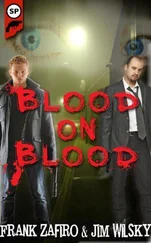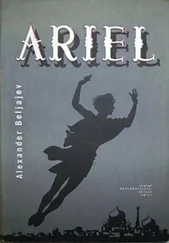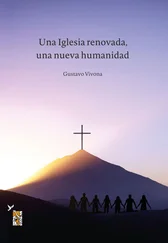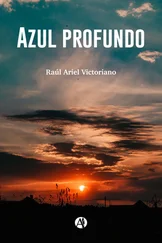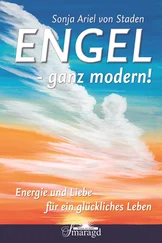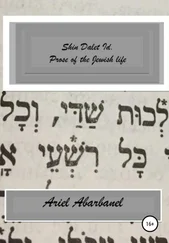Ariel Toaff - Blood Passover
Здесь есть возможность читать онлайн «Ariel Toaff - Blood Passover» весь текст электронной книги совершенно бесплатно (целиком полную версию без сокращений). В некоторых случаях можно слушать аудио, скачать через торрент в формате fb2 и присутствует краткое содержание. Жанр: Религиоведение, на английском языке. Описание произведения, (предисловие) а так же отзывы посетителей доступны на портале библиотеки ЛибКат.
- Название:Blood Passover
- Автор:
- Жанр:
- Год:неизвестен
- ISBN:нет данных
- Рейтинг книги:3 / 5. Голосов: 1
-
Избранное:Добавить в избранное
- Отзывы:
-
Ваша оценка:
- 60
- 1
- 2
- 3
- 4
- 5
Blood Passover: краткое содержание, описание и аннотация
Предлагаем к чтению аннотацию, описание, краткое содержание или предисловие (зависит от того, что написал сам автор книги «Blood Passover»). Если вы не нашли необходимую информацию о книге — напишите в комментариях, мы постараемся отыскать её.
Blood Passover — читать онлайн бесплатно полную книгу (весь текст) целиком
Ниже представлен текст книги, разбитый по страницам. Система сохранения места последней прочитанной страницы, позволяет с удобством читать онлайн бесплатно книгу «Blood Passover», без необходимости каждый раз заново искать на чём Вы остановились. Поставьте закладку, и сможете в любой момент перейти на страницу, на которой закончили чтение.
Интервал:
Закладка:
136
Cfr. Esposito and Quaglioni, Processi , cit., vol. I, pp. 327-328. "Dictus Abraham habebat dictum sanguinem in quodam coramine rubeo et erat coagulatus et in frusticulis et erat in totum ad quantitatem unius ovus." Maestro Tobias had bought some of it "quantum est una nucella pro uno rainense". The fact (at any rate already known to anyone possessing a certain familiarity with this type of trade, which was more widespread than one might imagine among both Jews and Christians, in the cities and above all the countryside, where it constituted an indispensable ingredient for the preparation of prodigious medications) emerges from the depositions of the other defendants in the Trent trial that the blood was placed on sale in the form of powder, coagulated or converted into lumps, ("portabat illum sanguinem ad vendendum, et illum tenebat in sinode seu çendado rubeo, et erat ille sanguis coagulatus et pulverizatus "; " et dicit quod sanguis, quem dictus Ursus portabat ad vendendum erat in uno vase [...] quod vas erat instagnatum a parte interiori, in quo vase erat sanguis pulverizatus, et erat tantum de sanguine in dicto vase quantum esset quarta pars unius amphiale val mosse, et dictus vas erat coopertum de quodam coramine albo".
137
The information is found in Flaminio Cornaro, Creta sacra sive de epis de episcopis utriusque ritus graeci et latini in insula Cretae , Venice, 1755, vol. II, pp. 382-383 ("Non satis quidem habuit perfida Judaeorum natio Creatiae degens Christianos iniquis adeo molestijs divexare, sed ut religioni etiam illuderent, teneros agnos [fortasse quia fideles pueros captare nequiverat] in Jesu-Christi- contumeliam cruci affixerunt, cujus facinoris nuntium cum Venetias delatum esset, Consilium XL virorum ad Criminalia, Cretensi regimini mandavit, ut omni studio in impios, qui adhuc ignoti erant, inquieret"). In this regard, see also H. Noret, Document inédits pour servir à l'histoire de la domination vénitienne en Crète de 1380 à 1485 , Paris, p. 425, no. 1. At any rate, the accusation relating to the passion of the lambs at Crete may only with difficulty be classified as an " accusation du meurtre rituel ", as it is perhaps interpreted by Jacoby (cfr. D. Jacoby, Les juifs à Venise du XIVe au milieu du XVI siècle , in H.-G. Beck, M. Manoussacas and A. Pertusi, Venezia centro di mediazione tra Oriente e Occidente, secoli XV-XVI . Aspetti e problemi, Florence, 1977, vol. II, p. 172).
138
On this custom and its anti-Christian significance, see Y. Tabori, Pesach dorot , Tel Aviv, 1996, pp. 92-105; I.J. Yuval, " Two Nations in Your Womb". Perceptions of Jews and Christians , Tel Aviv, 2000, p. 89 (in Hebrew). Again, at the beginning of the Seventeen Century, the Inquisition ordered the persecution of those Jews from the communities of the plains of the Po of northern Italy who still retained the wickedness to crucify Passover lambs. The Holy Office recorded that the Jews, although not subject to the jurisdiction of the Inquisition, could be tried by those tribunals in particularly serious cases. One of these was "se beffassero i Christiani, et per disprezzo della passione di Nostro Signore nella Settimana Santa, o in alto tempo crucifigessero agnello, pecora o altra cosa" [“if they ridiculed Christians, or showed contempt for the Passion of Our Lord during the Holy Week, or crucified lambs, sheep or anything else, at any time”] ( Breve informazione del modo di trattare le cause del S. Officio per li molto Reverendi Vicarii della Santa Inquisitione , Modena, Giuliano Cassiani, 1608, p. 15).
139
"'Ex delictis quae tu studiossime contra hebraeorum pernitosissimam credelitatem inquisivisti', Foscarini wrote to Gradenigo, 'unum de sacrilega immolatione, ita universis patefacere decrevi, quod nemo posthac sic tam amens qui dubitet vel tam improbus qui neget nequissimos iudaeos agnos temporibus nostris passim crucifigere' ". And further along, he invited him to persist in his uncompromising struggle " contra iudeos agnum crucifigentes" [“against the lamb-crucifying Jews”] (cfr g. Gardenal, Ludovico Foscarini e la Medicina , in Unamesimo e Rinascimento a Firenze , Florence, 1983, pp. 251-263 [p. 262]. In this case as well, it seems incorrect to consider, as Gardenal does (perhaps in the belief that “agni”, “agnello”, was a metaphor referring to Christian children), "questi sacrifici compiuti dagli ebrei nell'isola di Candia" [“these sacrifices committed by the Jews on the island of Crete”] as true and proper ritual homicides. He is followed in this error by Esposito ("Antonio Gradenigo aveva indagato su pretesi sacrifici umani compiuti dagli ebrei nell'isola di Candia " ).
140
E. Capsali, Seder Eliyahu Zuta , by A. Schmuellevitz, Sh. Simonsohm and M. Benayahu, Jersulem, 1977, vol. II, pp. 225-226.
141
In Hebrew, 'alitat ha-taleh , the slander of the lambs. In Biblical Hebrew, Taleh is the suckling lamb, and this is the original reading of the text, which at any rate appears in this form and with reference to this occurrence in another section of Capsali's chronicle ( Seder Eliyahu Zuta , cit., vol. I, p. 246). Other, corrupted or incomprehensible readings appear in many manuscripts, such as ha-'lah , understood by M. Benayahu as ha-'orlah , the foreskin. But "the slander of the lambs", without further explanation, makes no sense. At an earlier date, N. Porges ( Elie Capsali et sa Chronique de Venise , in "La Revue des Etudes Juives", LXXVII, 1923, pp. 20-40 [p. 24]) had explained the word, considering it a corruption of ha-mazah , leaven, understanding the term in the sense of Host. Therefore, at Candia, in 1452, the Jews are said to have been accused of profanation of the Host. The hypothesis of Porges, who was unaware of the inquiry for the crucifixion of the lambs, is, today, uncritically accepted by others, who arbitrarily add the Candia case in 1452 to the case record of the desecration of the host (cfr. Simonsohn, in Capsali , Seder Eliyahu Zuta , cit., vol, III, p. 77; M. Rubin, Gentile Tales. The Narrative Assault on Late Medieval Jews , New Haven, Conn., 1999, pp. 115-116). Still more recently, there are those who refer to Capsali's text as the "resoconto del processo intentato in 1452 contro nove ebrei di Candia con l'accusa di omicidio rituale" [“report on the trial proceedings brought against nine Jews of Candia on a charge of ritual murder”] (Cfr. G. Corazzol, Sulla Cronaca dei Sovrani di Venezia [" Divre' ha-yamim le-malke' Wenesiy'ah "] di Rabbi Elia Capsali da Candia, in "Studi Veneziani", XLVII, 2004, p. 318).
142
Capsali, Seder Eliyahu Zuta , cit., vol, II, pp. 226-227. In this regard, see also Porges, Elie Capsali , cit., pp. 24-26.
143
Capsali , Seder Eliyahu Zuta , cit., vol., II, p. 227.
144
In this case as well, we are in debt to our friend Reiny Mueller for the invaluable archive information supplied in this regard, and to Dr. Rachele Scuro for the transcription of the documents utilized by myself.
145
"Cum se Antonius Grandonico et socii sindici intromisit pro suo officio certas causas quibus in isto Maiori Consilio datum est principium et pro non dando tedium isti Maiori Consilio et tenere totam civitatem impeditam pro simili re, vadit pars quod omnes dicte licet melius videbitur et placebit et in illis capre finem, sicut multis vicibus fuit servatum". The proposal was approved by a large majority (ASV, Maggior Consiglio , Deliberazioni, Libro Ursa [reg. 22] [1415-1454], c. 178v. [c. 184v according to the pencil numeration at the bottom], 5 November 1451). One piece of information, perhaps connected with the accusation of the crucifixion of the lambs, dates back to 1448. In March of that year, Antonio Gradenigo had thrown a Jew from Candia, Yospe [Yoseph] di Retimo, into prison, in Venice, under an unknown accusation. Eight months afterwards, the prisoner complained to the officials of the Quarantia, who were visiting the prisons, so that Gredenigo might transfer him from prison to prison to compel him to confess and had not concluded the preliminary investigation and hearing within eight moths, as required by the laws of Venice ("Capita de XL [... in carceribus] reppererint inter ceteros Yoste [recte: Yospe] ebreum de Rethimo, se gravantem ver virum nobilem Antonium Gradenico, sindicum partium Levantis, teneri carceratum iam 8 mensibus contra id quod de iure facere potest, cum sic disponentibus legibus et ordenibus nostris introducto casu suo ad consilium eum expedire teneretur infra tres menses, ultra quem terminum eum minime teneri poterat, subiugitique ipse Yospe quod idem ser Antonius hoc tempore eum multociens permutavit de carcere suo modo, et videns non posse ab eo habere nisi ut mera est rei veritas, non curat ipsum expedire"). In fact, Gradenigo has present Yospe's case before the Senate a good four times without obtaining his condemnation, as he desired. The Senate granted him another one-month postponement in which to conclude the inquiry and bring the Jew to trial, otherwise he would have to be released (ASV, Senato Mar, reg. 3, c. 83v. 27 October 1448). I wish to express my thanks to Dr. Stefano Piasentini for this information. It is however possible that Yospe's imprisonment, desired by Gradenigo, district mayor in the Levant, should be placed in relation with the prohibition against the ownership of real property by the Jews of Retimo outside the Jewish quarter, which was reiterated by the Counsel of Forty of Venice on 11 December 1448. On that occasion, the judiciaries of the Serenissima were investigating the case in which Jews from Retimo had made fictitious sales of their real property (Cfr. D. Jocoby, An agent juif au service de Venise. David Mavrogonato de Candie , in "Thesaurismata. Bolletino dell'Istituto Ellenico di Studi Bizantini et Post-Bizantimi", IX, 1972, pp. 86-87.
Читать дальшеИнтервал:
Закладка:
Похожие книги на «Blood Passover»
Представляем Вашему вниманию похожие книги на «Blood Passover» списком для выбора. Мы отобрали схожую по названию и смыслу литературу в надежде предоставить читателям больше вариантов отыскать новые, интересные, ещё непрочитанные произведения.
Обсуждение, отзывы о книге «Blood Passover» и просто собственные мнения читателей. Оставьте ваши комментарии, напишите, что Вы думаете о произведении, его смысле или главных героях. Укажите что конкретно понравилось, а что нет, и почему Вы так считаете.


